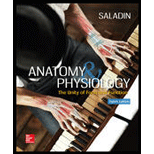
To discuss:
The structure and action of the pupillary constrictor and dilator; anatomy of their autonomic innervation; and the photo pupillary reflex.
Introduction:
The perception of items that are present in the surroundings is termed as sight or vision. This perception occurs by means of reflection or emission of light from those objects. The retina, the neural component, is one of the principle components of the eyeball. It consists of three cell layers, and these cell layers are composed of ganglion cells, bipolar cells and photoreceptor cells. The photoreceptor cells are involved in the absorption of light and produce an electrical or chemical signal. These cells are of three kinds and they are cones, rods, and some ganglion cells. These cone and rod cells generate visual images and these cells are related ependymal cells present in the brain. Photopsin and rhodopsin is the visual pigment present in a cone cell and rod cell, respectively. Cone cells are responsible for photopic vision (day vision) and trichromatic vision (color vision), and rod cells are responsible for scotopic vision (night vision).
Want to see the full answer?
Check out a sample textbook solution
Chapter 16 Solutions
Anatomy & Physiology: The Unity of Form and Function
- True or false: Only some, not all, LGN neurons project axons to primary visual cortex.arrow_forwardThe glia limitans is produced by _____ _____ and forms a barrier associated with the ______ basal lamina. photoreceptor synapses, retinal microglia processes, vascular astrocyte processes, parenchymal pyramidal neurons, neuralarrow_forwardHow the ability to hear relies on vibrationarrow_forward
- functions of, and describe Cerebrum, Cerebellum, Corpus callosum, Pons and Medulla oblongata.arrow_forwardAll of the following except the nerve begin or end in the orbit.a. opticb. oculomotorc. trochleard. abducense. accessoryarrow_forwardThe apical microvilli of a gustatory cell are called _____.arrow_forward
- True or false and why.According to the Labeled Line Principle, a receptor such as the nociceptor will be equallysensitive to both pain and temperature when stimulated.arrow_forwardTesting for neurological function involves a series oftests of functions associated with the cranial nerves. Whatfunctions, and therefore which nerves, are being tested byasking a patient to follow the tip of a pen with their eyes?arrow_forwardWhich of the following is clearly visible when viewing the ventral aspect of the brain Transerve fissure, hypothalamus, central sulcus, olfactory bulbs or corpus callosumarrow_forward
- Young children usually have a fair degree of hyperopia. As they grow, their eyeballs lengthen and the hyperopia usually clears up. Given what you know about accommodation, explain why young children, though hyperopic, don’t need glasses.arrow_forwardhow morphine alters the concious perception of painarrow_forwardHow disorder of hypermetropia happens? How it can be corrected.arrow_forward
 Human Anatomy & Physiology (11th Edition)BiologyISBN:9780134580999Author:Elaine N. Marieb, Katja N. HoehnPublisher:PEARSON
Human Anatomy & Physiology (11th Edition)BiologyISBN:9780134580999Author:Elaine N. Marieb, Katja N. HoehnPublisher:PEARSON Biology 2eBiologyISBN:9781947172517Author:Matthew Douglas, Jung Choi, Mary Ann ClarkPublisher:OpenStax
Biology 2eBiologyISBN:9781947172517Author:Matthew Douglas, Jung Choi, Mary Ann ClarkPublisher:OpenStax Anatomy & PhysiologyBiologyISBN:9781259398629Author:McKinley, Michael P., O'loughlin, Valerie Dean, Bidle, Theresa StouterPublisher:Mcgraw Hill Education,
Anatomy & PhysiologyBiologyISBN:9781259398629Author:McKinley, Michael P., O'loughlin, Valerie Dean, Bidle, Theresa StouterPublisher:Mcgraw Hill Education, Molecular Biology of the Cell (Sixth Edition)BiologyISBN:9780815344322Author:Bruce Alberts, Alexander D. Johnson, Julian Lewis, David Morgan, Martin Raff, Keith Roberts, Peter WalterPublisher:W. W. Norton & Company
Molecular Biology of the Cell (Sixth Edition)BiologyISBN:9780815344322Author:Bruce Alberts, Alexander D. Johnson, Julian Lewis, David Morgan, Martin Raff, Keith Roberts, Peter WalterPublisher:W. W. Norton & Company Laboratory Manual For Human Anatomy & PhysiologyBiologyISBN:9781260159363Author:Martin, Terry R., Prentice-craver, CynthiaPublisher:McGraw-Hill Publishing Co.
Laboratory Manual For Human Anatomy & PhysiologyBiologyISBN:9781260159363Author:Martin, Terry R., Prentice-craver, CynthiaPublisher:McGraw-Hill Publishing Co. Inquiry Into Life (16th Edition)BiologyISBN:9781260231700Author:Sylvia S. Mader, Michael WindelspechtPublisher:McGraw Hill Education
Inquiry Into Life (16th Edition)BiologyISBN:9781260231700Author:Sylvia S. Mader, Michael WindelspechtPublisher:McGraw Hill Education





